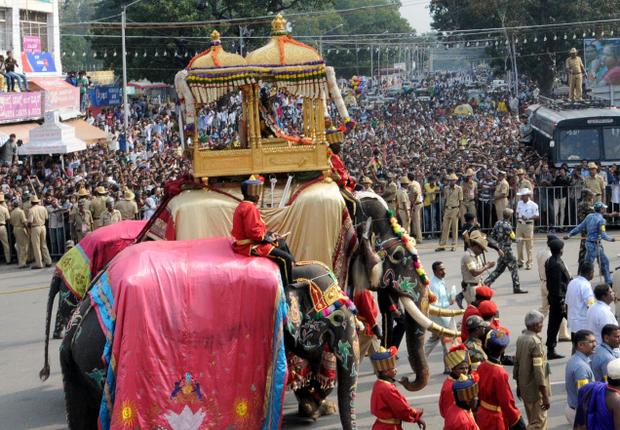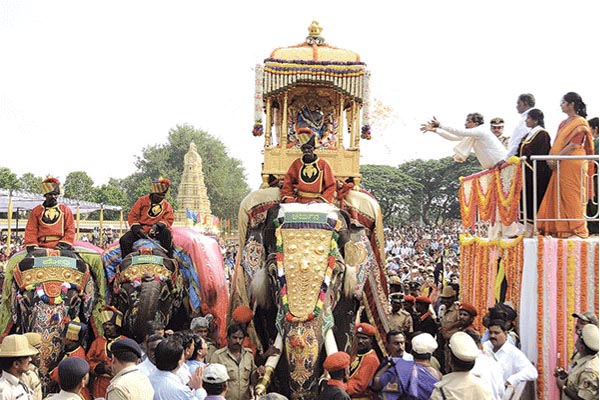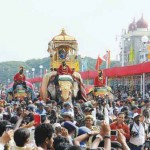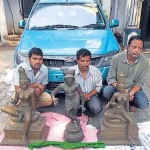
Jamboo Savari draws huge crowds
The 10-day cultural extravaganza for which Mysore is renowned came to a close with the famed Jamboo Savari here on Saturday.
The Vijayadashmi procession was the high-mark of the ten-day festivities, which were inaugurated on September 25. A sea of humanity had converged along the 5 km procession route from the Amba Vilas Palace to the Bannimantap Grounds.
The cynosure of all eyes was Arjuna, who carried the 750 kg golden howdah with the idol of Goddess Chamundeshwari, flanked by elephants Mary and Cauvery at the fag end of the procession. As Arjuna approached the podium, 21 rounds of canon shots were fired even as the police band played the National Anthem and the three elephants raised their trunk in salute.

Chief Minister Siddaramaiah and district in-charge Minister V. Srinivas Prasad showered flower petals on the howdah. The elephants marched out of the palace accompanied by a vast crowd surging forward to get a close glimpse of the spectacle.
Earlier, 122 folk troupes and 45 tableaux from different parts of the State, marched from Jayarama Gate of the palace.
The regal march of the caparisoned elephants was led by Nishane elephant Balarama, closely followed by the royal elephant Gajendra. Accompanied by folk artistes dancing to the rhythm and beat of cymbals and drums, the other elephants – Varalakshmi, Gopi, Vikrama, Harsha and Prashanth – added sheen to the procession which got off to an impressive start at 1.10 p.m.
The police band was closely followed by the old canons used during the medieval times and which are part of the palace collections. A significant aspect of this year’s procession was the accommodation of a large number of cultural troupes from different States as well. Bihu performed by folk artistes from Assam drew loud applause from the audience, as also folk artistes from Puducherry, Kerala and Rajasthan.
The customary trademarks of the region including Veeragaase, Dollu Kunitha, Keelukudure, Hejje Mela and Garudi Gombe were part of the spectacle. A tradition inherited from the rulers of the Vijayanagar empire by the Wadiyars who started it in 1610 A.D at Srirangapatna, Dasara is celebrated as Naada Habba, with the government funding the celebrations in the present times.
(The Hindu)


